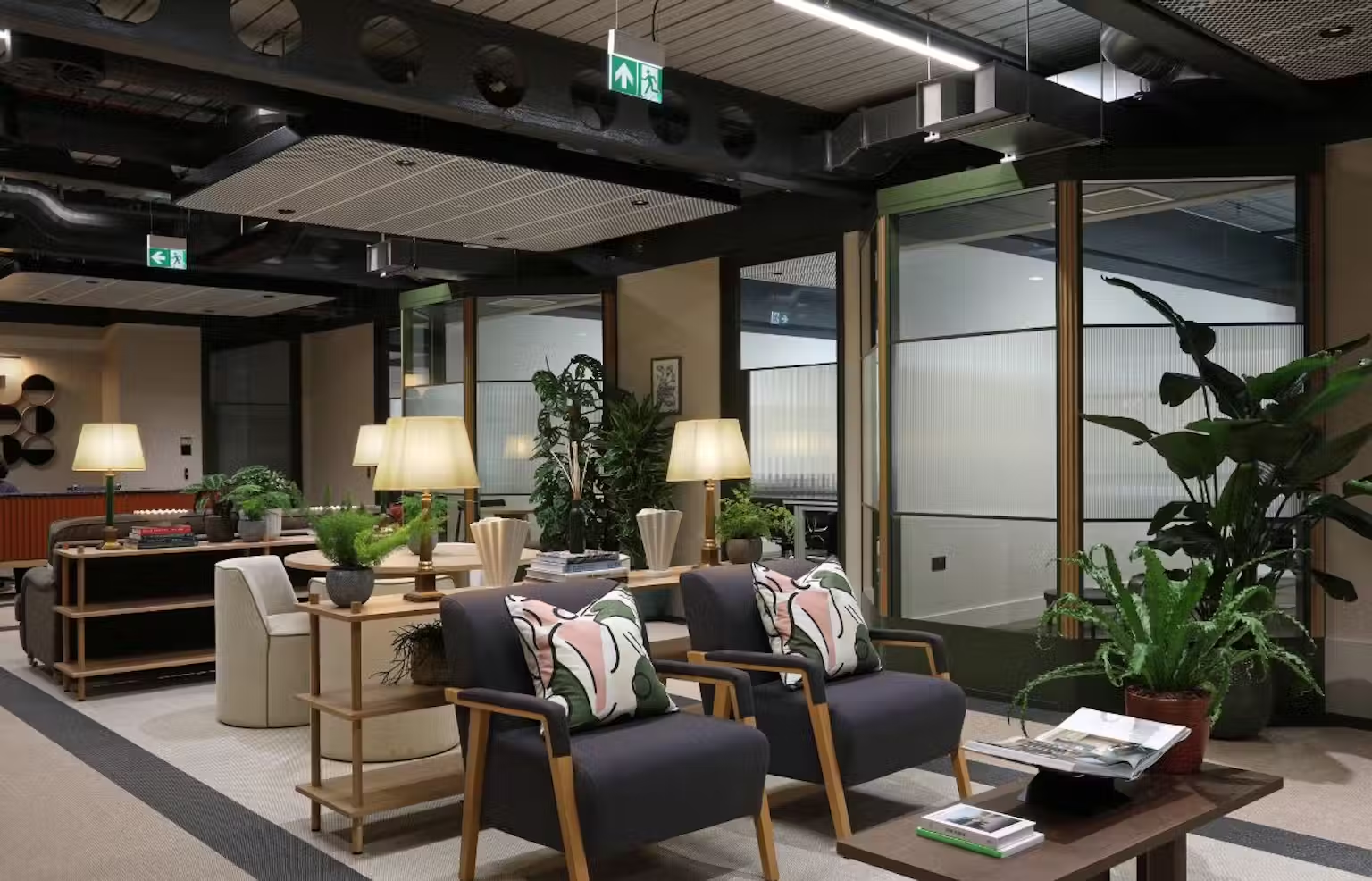Moving office is a big decision that can impact your business in multiple ways, from your team’s productivity and culture to your bottom line. With the London office market constantly evolving, 2025 has so far presented both challenges and opportunities for companies looking to relocate or upgrade their workspace.
If you’re planning an office move this year, it’s crucial to approach it strategically. Here’s a detailed guide to the top considerations that will help you make the right choices and ensure a smooth transition.
1. Flexibility Is King
In recent years, businesses have become more conscious of the risks of long-term, rigid leases. The rapid shift to hybrid working and changing business needs mean that committing to a 5-10 year lease can quickly become a burden.
Why does lease flexibility matter?
- It allows you to scale your space up or down as your headcount changes.
- It gives you agility to respond to market changes without being locked in.
- It reduces financial risk if your business needs shift unexpectedly.
Many landlords and flexible office providers now offer shorter lease terms or break clauses. This trend is set to continue in 2025, so look for deals that give you room to adapt.


2. Budgeting for Fit-Out and Business Rates
Office fit-outs and business rates can be a major hidden cost. While landlords may provide a “shell and core” space, you’ll often need to invest in desks, meeting rooms, tech infrastructure, and branding to create a productive environment. All of which is included in Flexible Office space (aka Serviced or Managed office space)
Key points to remember:
- Fit-out costs in London can range from £30 to £120+/sqft depending on quality and design.
- Business rates have been rising steadily, so factor these ongoing costs into your budget.
Use resources like the Flex Office Rent Calculator for guidance on typical costs of full inclusive rentals and how to budget/compare accordingly.
3. Location and Accessibility: More Important Than Ever
Even with hybrid working, location remains critical. The best offices are near good transport links, amenities, and areas where your employees want to spend time.
Why location still matters:
- Attracting and retaining talent depends heavily on commute times and convenience.
- Client meetings and brand perception are influenced by where your office is situated.
- Proximity to other businesses and networking opportunities can boost collaboration.
As hybrid models mean fewer days in the office, employees often prioritise an easy, pleasant commute for those days. So don’t just think about cost per sqft – consider lifestyle and convenience!
Explore detailed Area Guides to find office locations that fit your team’s needs.
4. Speed of Move and Minimising Disruption
A drawn-out move can disrupt your business operations, delay projects, and frustrate staff. Speed and efficiency are crucial.
Flexible office providers have led the way with quick turnaround moves, often delivering ready-to-use spaces in days or weeks instead of months.
Ask potential landlords or providers about their move-in timelines, and plan your internal communications carefully to keep everyone informed.
5. Future Growth and Scalability
It’s tempting to choose the smallest possible space to save money, but lack of room for growth can lead to an expensive and stressful move again in the near future.
When selecting your next office, consider:
- How much do you expect to grow in the next 2-3 years?
- Is there flexible space within or nearby you can take on as an expansion option?
- Does the building offer additional facilities, i.e. breakout space / lounges and/or meeting rooms you can book as needed?
Flexible offices and coworking spaces are ideal for companies uncertain about future growth, offering the ability to expand or contract without renegotiating leases.
6. Technology and Facilities
Modern offices must support seamless connectivity and collaboration.
Ensure your new office has:
- High-speed internet and robust IT infrastructure
- Video conferencing-enabled meeting rooms
- Breakout areas for informal meetings and socialising
- Amenities like kitchens, outdoor space, showers, and bike storage to support employee wellbeing
The right technology and facilities can significantly impact productivity and employee satisfaction.
7. Sustainability and Wellbeing
Sustainability is no longer optional, it’s a priority. Employees increasingly expect workplaces to support environmental goals and their wellbeing.
Look for offices with:
- Energy-efficient systems and green certifications
- Good natural light and air quality
- Wellness spaces and ergonomic furniture
A sustainable office also helps your business meet ESG targets, increasingly important to investors and clients.
How Flex Office Solutions Can Help
Relocating your office doesn’t have to be overwhelming. Our expertise in the market means we can help you find flexible, cost-effective solutions tailored to your needs. Whether that’s a serviced office, managed workspace, or a traditional lease with flexible terms.
We also offer valuable tools like our Office Space Calculator to help you estimate the right size for your team and budget, plus in-depth Area Guides to find the best locations.
Final Thoughts
Moving office is a big step, but with careful planning and the right support, it can be an exciting opportunity to future-proof your business. In 2025, prioritise flexibility, location, and wellbeing, lean on expert advice to navigate the complexities of the office space market.
If you’re considering a move or want to discuss options, get in touch with Flex Office Solutions for a free consultation.



